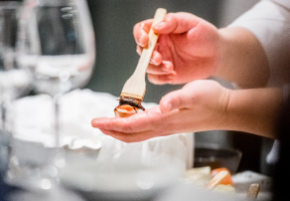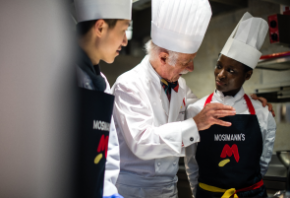- About
- Programs
- Campus Life
- Career Services
- Admissions
- News & Events
- Alumni
Our Top 5 Food Travel Trends 2020
Culinary tourism or traveling to a destination with the primary purpose of enjoying local food and beverages has been catching up with “mainstream tourism” since 2012, according to World Food Travel Association. Since 2018, there has been a dramatic increase in the interest for and availability of food-related events, activities and experiences.
In January 2020, World Food Travel Association, a leading authority on culinary tourism, released their latest research findings on the food travel trends 2020 via their “2020 Food Travel Monitor”. The survey was carried out in 6 countries with over 4,500 respondents, balanced between genders and generations, and represents the most complete research on the subject available today.
Based on the survey findings, we have compiled our top 5 food travel trends 2020 that can help food and beverage businesses and tourist destinations maximise their earning potential.
1. Millennials and Gen Z are the most promising culinary travel markets
5 years ago, Millennials, or those born between 1981 and 1996, were considered top food travelers in comparison to other generations. In 2020, this is still the case, with a whopping 77% of Millennial leisure travelers undertaking trips “to enjoy memorable eating and drinking experiences”.
They are closely followed by Gen Z (those born after 1996), who are strongly motivated by exploring local food and drink while traveling, despite their young age and fewer travel experiences. World Food Travel Association goes as far as classifying Gen Z as “Super Foodies” thanks to their high interest in food, its history and heritage.
Both of these markets are particularly important for food and beverage industry professionals to attract and nurture relationships with, as they have decades of culinary tourism ahead of them.
2. Culinary travelers enjoy active tourism and spend more
Interestingly, the survey found that culinary travelers, more so than leisure travelers, are interested in participating in an array of touristic activities, beyond food and drink. They seem to make the most of their trips by visiting cultural attractions, shopping, taking tours and attending events and performances.
Culinary travelers also tend to “spend 24% more per day than other leisure travelers”. This is great news for all tourist destinations, which can be rewarded with higher revenues from this market by organising and promoting a range of local activities to food travelers.
3. Travelers seek variety in their culinary travel experiences
Culinary travelers tend to appreciate variety when it comes to their food and beverage experiences, from informal and adventurous to high profile affairs. This trend is illustrated by the top 4 food travel activities listed by survey respondents: going to a restaurant “for a memorable experience”, eating at a gourmet restaurant, enjoying street food from a stall and going to a famous restaurant or bar.
Moreover, culinary travelers like to actively engage with food and drink by participating in fairs, visiting food festivals, farms, wineries, taking cooking classes and joining guided culinary tours.
4. Friends and family, online review sites and social media, are the strongest influencers of travel decisions
The biggest influence on the travelers’ decision to visit a new destination is a recommendation by friends and family (61% of all respondents). 53% of culinary travelers trust online review sites and 41% of them are influenced by social media posts from friends and family. We trust the opinions of those close to us or those who are like us, and food tourism is no exception.
While social media remains an important organisational communication channel for tourist destinations, the most effective promotion is actually done by individual travelers sharing their personal experiences on social networks.
According to the “2020 Food Travel Monitor” research, “85% of Millennial and 85% of Gen Z leisure travelers share their travel experiences on social media on at least half of their trips”. This represents a great potential for free and credible publicity for food and beverage organisations, which should make a special effort to encourage clients to share their experiences on social media with friends and family.
5. Travelers prefer local, authentic, and socially responsible culinary experiences
Gone are the days when most tourists preferred safe, standardised food and beverage options when traveling to new destinations. Now, travelers are after local, traditional and authentic dishes and drinks that add to a better understanding of a local culture. Offering unique culinary experiences particular to a specific region or area are a must to generate interest among the modern travelers.
On top of that, increasing importance is being placed upon supporting socially responsible businesses, whereby “63% of Millennials try to eat at places which demonstrate social responsibility”. Food and beverage businesses are expected to not only operate responsively, but also proactively communicate to their audiences about their socially responsible practices.
These food travel trends represent a tremendous growth opportunity for food and beverage operations and tourist destinations, provided they succeed at adapting their operations, communications and marketing practices to the evolving customer preferences.
#Student Life



















